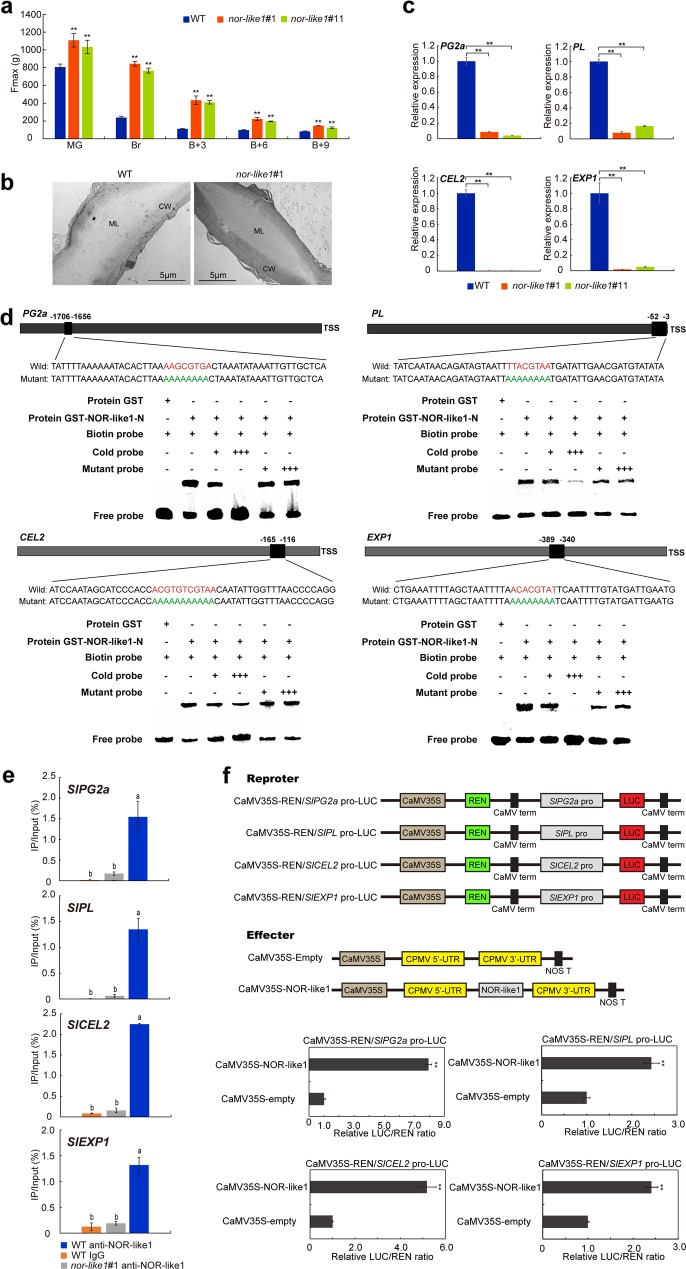Fig. 7. SlPG2a, SlPL, SlCEL2, and SlEXP1 are directly regulated by NOR-like1 resulting in increased tomato fruit firmness in nor-like1 mutants.
a The fruit softening process was delayed and softening degree was reduced in nor-like1 mutant tomato fruits compared with that in WT fruits. b TEM indicating that the nor-like1 mutant fruit cell walls were more deeply stained and had more closely arranged microfilaments and dark middle lamella compared with that in WT fruits. CW, cell wall, ML, middle layer. Bars = 5 μm. c Expression of SlPG2a, SlPL, SlCEL2, and SlEXP1 was significantly downregulated both in nor-like1#1 and nor-like1#11 mutants compared with that in WT. Asterisks indicate p < 0.01 (Student’s t-test). d Binding of NOR-like1 to the promoters of downstream target genes SlPG2a, SlPL, SlCEL2, and SlEXP1. The sequences of the wild-type probes containing the NACRS were biotin-labeled. Competition for NOR-like1 binding was performed with 50× and 500 × cold probes containing the wild-type NACRS (indicated with red letters) or mutated NACRS (indicated with green letters). The symbols + or − represent presence or absence, respectively, +++ indicates increasing amounts. e ChIP-qPCR assay showing the direct binding of NOR-like1 to the promoter of SlPG2a, SlPL, SlCEL2, and SlEXP1. Values represent the percentage of DNA fragments in wild-type fruits that co-immunoprecipitated with anti-NOR-like1 or IgG, or DNA fragments in nor-like1#1 fruit that co-immunoprecipitated with anti-NOR-like1 relative to the input DNA. Bars represent ± SD of three independent replicates. Significant differences (Duncan’s multiple range test, p < 0.05) are indicated in lowercase. f Transient expression assay showing NOR-like1 greatly activated the SlPG2a, SlPL, SlCEL2, and SlEXP1 promoters. Each value represents the means of three biological replicates. Asterisks indicate p < 0.01 (Student’s t-test)

